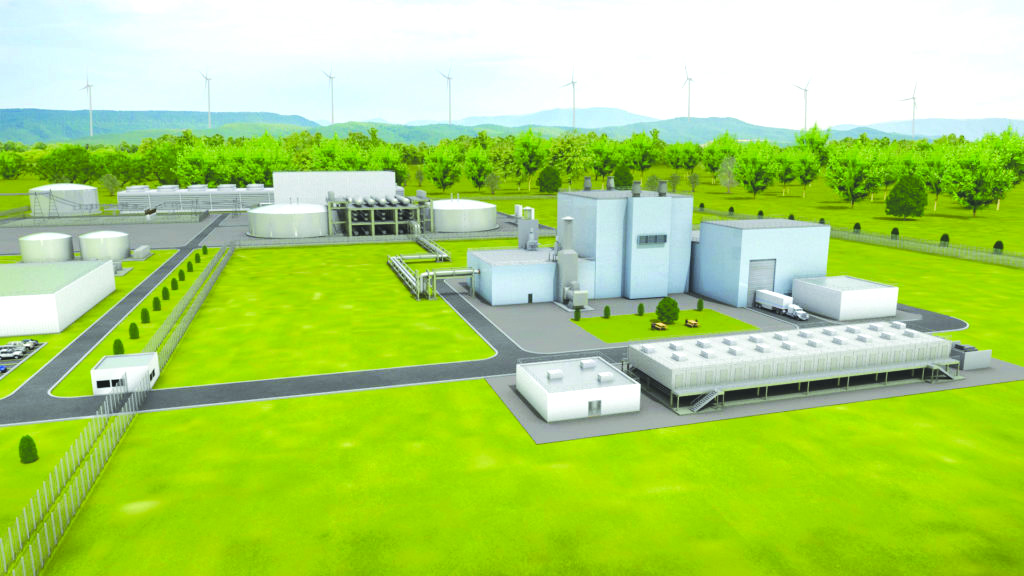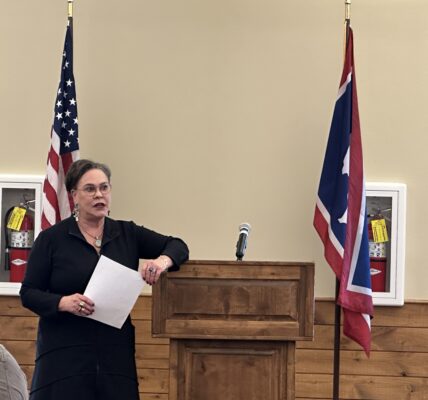
By Greg Johnson
Laramie Boomerang
Via- Wyoming News Exchange
LARAMIE — Last summer’s bombshell announcement that Wyoming will be home to a first-of-its-kind nuclear demonstration project has energized the Cowboy State’s efforts to wean itself from dependence on fossil fuels.
Best known for its abundant, high-quality and affordable coal reserves, Wyoming has been almost desperately seeking other economic drivers to diversify an economy that’s shrinking faster as the mainstreaming of renewable energy technologies accelerates. Could a new generation of smaller, nimble and highly efficient nuclear plants be the answer?
“Well, that’s the $100,000 question, isn’t it?” said Rob Godby, a leading energy economist and interim dean for the University of Wyoming College of Business.
“Nuclear is really a different effort than what we’ve done in the past, which is developing our other energy resources,” Godby said. “The benefit really is, potentially, in economic diversification.”
That’s because nuclear is widely considered one of the most practical ways to eliminate the world’s dependence on fossil fuels for power generation, he said.
As the United States and other nations make addressing climate change a priority, the importance of revolutionizing the nuclear sector has become an area of focus.
For Wyoming, it means all eyes are on the Cowboy State as the site for a smaller prototype plant in Kemmerer developed by Bill Gates-backed TerraPower. It also is an opportunity for the state to develop other professions and support for nuclear, especially educating a new workforce, Godby said.
“Nuclear in some ways is far more sustainable and it’s high-income,” he said. “But it’s different than in the past (for Wyoming), which was to exploit the resource.
“This is about developing technology, which is very consistent in what the state wants to do in diversifying its economy.”
Already out front as a leader in researching solutions for waste carbon dioxide emissions, Wyoming was chosen last summer to pioneer a prototype nuclear project designed to repurpose a retiring existing coal-fired power plant.
TerraPower’s Natrium reactor is a partnership with Rocky Mountain Power, PacifiCorps and the U.S. Department of Energy. And unlike traditional nuclear facilities, Natrium will be smaller, modular and designed to replace existing plants when they retire.
The first of those will be Rocky Mountain Power’s Naughton power plant in Kemmerer, which will close in 2025. When it does, the expectation is to quickly replace it with the modular Natrium, a sodium-cooled reactor that will generate 345 megawatts of electricity.
Unlike traditional light-water reactors that are cooled using regular water, Natrium uses a sodium solution. That these plants also are built in modules and placed on already developed sites could be another selling point for them if the Kemmerer demonstration pans out, Godby said.
“It’s still a far cry to think we’ll see as many small nuclear plans as we have coal and gas plants,” he said. “But it is an opportunity and part of developing what’s being called ‘new nuclear’ to rethink traditional nuclear.
“These new, small technologies really look to reduce the cost of nuclear power production through harnessing existing resources. They’re small and they’re flexible, and the Natrium plant has the ability to ramp its output in ways traditional plants can’t, so they’re much more flexible.”
By using them to replace existing plants when they go offline also allows them to plug into the power grid.
“That brings you economies of scale in terms of regulation,” Godby said, adding that TerraPower isn’t the only company developing smaller nuclear plants. “We’re getting nuclear projects down to the micro scale right now. … One company, NuScale’s light water reactor, is basically a mini version of the basic (plant).”
Along with the original players announced last year, the Natrium demonstration project has added a pair of heavy-hitting partners. The Japan Atomic Energy Agency and Mitsubishi Heavy Industries have both announced plans to cooperate with TerraPower’s effort in Kemmerer, according to a recent report by Reuters.
Mitsibushi will provide technical support and experience from Japan’s advanced reactors.
The Natrium plant is scheduled to come online in 2028 and expected to cost $4 billion, half of which will be paid by the federal government.
The initial project had explored TerraPower partnering with the China National Nuclear Corp, but that was scuttled when President Donald Trump put a clamp on nuclear research with China.
That Japan now is a major player in the project “is not surprising,” Godby said. “It’s never been the intention of (TerraPower) to build everything from scratch,” he said. “TerraPower, as far as I know, always intended to work with partners.”
Maximizing Wyoming’s position as the site for building and potentially proving the viability of the Natrium reactor is a top priority for the state, said Glen Murrell, executive director of the Wyoming Energy Authority.
“No doubt about that,” he said. “It’s very exciting. Advanced nuclear was always a priority for the Wyoming Energy Authority, but it wasn’t as high a priority until the TerraPower announcement.”
Along with reusing existing power plant sites, Murrell said there is potential for the state also to develop nuclear-specific education and manufacturing.
“These designs are not on the gigawatt scale, they’re smaller and modular so you can manufacture multiple of them and get the cost down,” he said. “If we have the test reactor in the state and we have the existing (support) industries, that’s an opportunity there.”
He said getting the test plant was the first step in a marathon.
“TerraPower hit a home run by selecting Wyoming because there’s not a state like ours that values energy like we do,” Murrell said.
The University of Wyoming is already exploring more nuclear-specific education paths.
“People are watching us for sure, and not just the United States,” he said. “Japan in particular has been a good partner with Wyoming across different projects and opportunities. The learning and knowledge will flow both directions.”
While TerraPower and the Natrium plant seem on a fast track for development, there are still many regulatory hoops to jump through, Godby said.
No matter how friendly state and federal governments are to the development of “new nuclear,” there is still “tons of regulation,” he said.
“It’s a rough haul regardless, but we have the benefit of the facility and a more welcoming social environment,” Godby said. “This state is definitely more energy-friendly than other states. You can’t underestimate as well having a big partner like Rocky Mountain Power and PacifiCorps.”
To that end, the success of the Natrium project is very important, he said.
“PacifiCorps in particular is really depending on this,” Godby said. “They’ve been in between a real rock and a hard place. The coastal states they serve have been real (anti-fossil fuels). For PacifiCorps, this is probably one way to thread that needle and move forward toward nuclear power.”
As important as finding technical solutions to climate change is navigating an increasingly turbulent political landscape regarding energy, Godby said. For PacifiCoprs, it means balancing the opposite interests of its customers.
“The six states served by PacifiCorps — Wyoming, Utah, Idaho, Washington, Oregon and California — in those states you have two polar opposites in terms of political extremes and the policy demands they make,” he said. “It’s very difficult to threat that needle to address both sides of issues.”
Wyoming is unique in that it’s “energy dependent and almost desperate for new development,” he said. “I don’t know there’s another state other than Alaska that knows the downside of energy economics collapsing more than Wyoming.”
Although the state’s low population and rural landscape can make it hard for Wyoming to compete with larger areas like Colorado’s Front Range and other urban tech centers, it does have attractive qualities.
“We have the ability to develop the assets to serve that sector,” Godby said. “We have a willing and able workforce that could transition and a definite need to diversify.”
Most importantly, the world likely needs nuclear to meet its climate change goals, he said.
“Just by its nature, the nuclear energy power sector is a difficult sector and will always face opposition,” Godby said. “But I will say that current outlooks are more optimistic than they have been in decades.”





